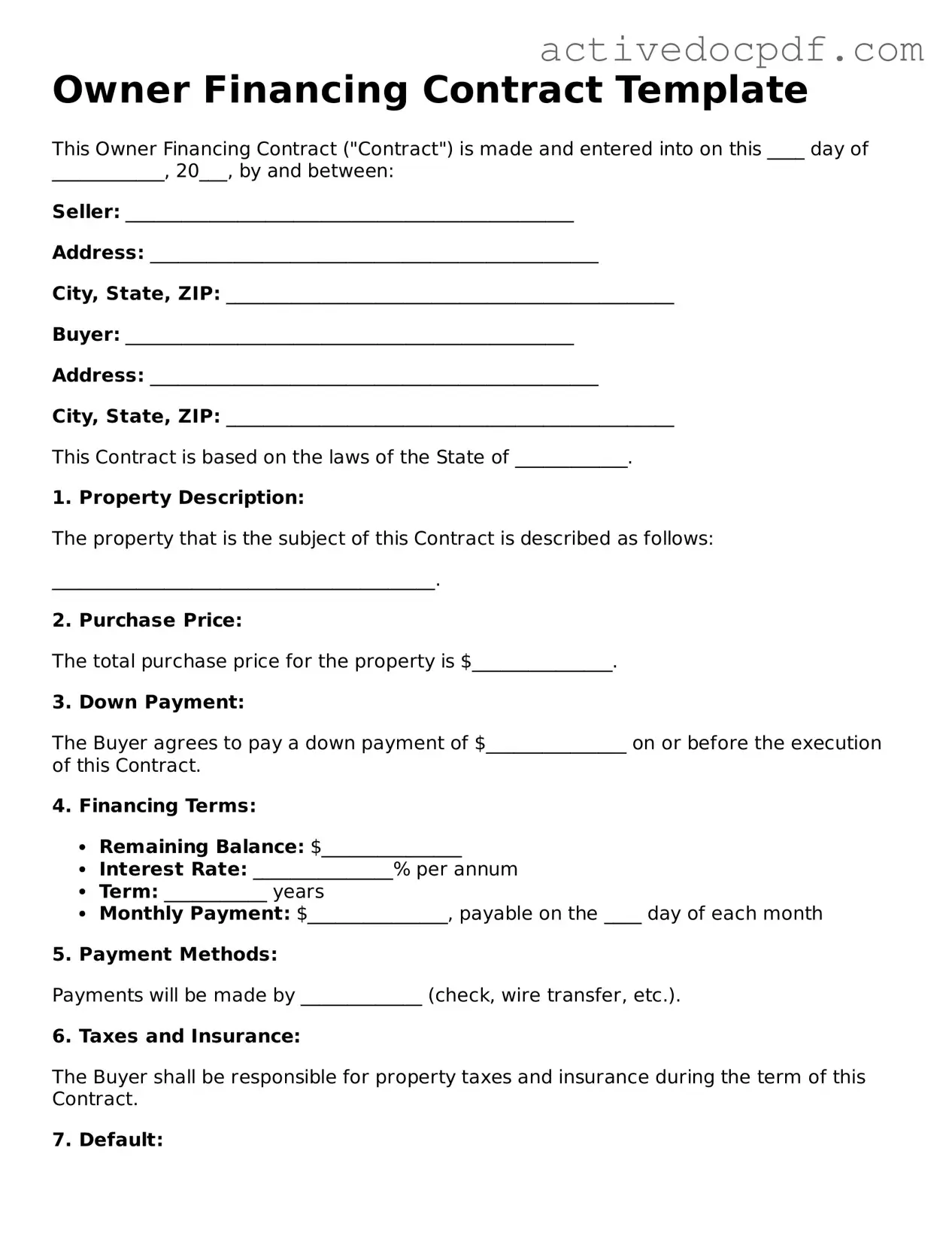Legal Owner Financing Contract Template
An Owner Financing Contract is a legal agreement that allows a property seller to finance the purchase directly to the buyer, bypassing traditional lenders. This arrangement can be a win-win, providing buyers with easier access to homeownership while offering sellers a steady income stream. Understanding the nuances of this contract can empower both parties to navigate the transaction confidently.
Edit Form Online
